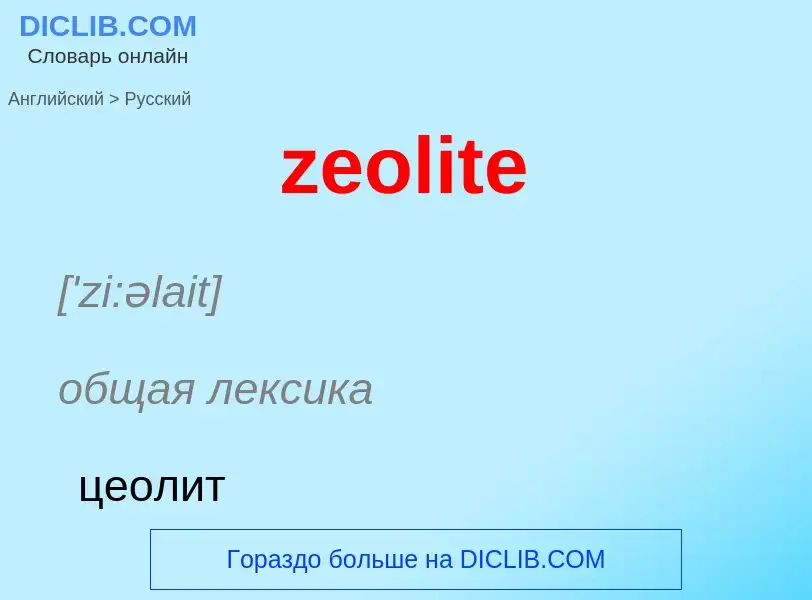Tradução e análise de palavras por inteligência artificial ChatGPT
Nesta página você pode obter uma análise detalhada de uma palavra ou frase, produzida usando a melhor tecnologia de inteligência artificial até o momento:
- como a palavra é usada
- frequência de uso
- é usado com mais frequência na fala oral ou escrita
- opções de tradução de palavras
- exemplos de uso (várias frases com tradução)
- etimologia
zeolite - tradução para russo
['zi:əlait]
общая лексика
цеолит
существительное
минералогия
цеолит
Definição
Wikipédia
Zeolites are microporous, crystalline aluminosilicate materials commonly used as commercial adsorbents and catalysts. They mainly consist of silicon, aluminium, oxygen, and have the general formula Mn+
1/n(AlO
2)−
(SiO
2)
x・yH
2O where Mn+
1/n is either a metal ion or H+. These positive ions can be exchanged for others in a contacting electrolyte solution. H+
exchanged zeolites are particularly useful as solid acid catalysts.
The term zeolite was originally coined in 1756 by Swedish mineralogist Axel Fredrik Cronstedt, who observed that rapidly heating a material, believed to have been stilbite, produced large amounts of steam from water that had been adsorbed by the material. Based on this, he called the material zeolite, from the Greek ζέω (zéō), meaning "to boil" and λίθος (líthos), meaning "stone".
Zeolites occur naturally but are also produced industrially on a large scale. As of December 2018, 253 unique zeolite frameworks have been identified, and over 40 naturally occurring zeolite frameworks are known. Every new zeolite structure that is obtained is examined by the International Zeolite Association Structure Commission (IZA-SC) and receives a three letter designation.


![[[Natrolite]] from Poland [[Natrolite]] from Poland](https://commons.wikimedia.org/wiki/Special:FilePath/Natrolit, Gracza 2Polska.jpg?width=200)

![A form of [[thomsonite]] (one of the rarest zeolites) from India A form of [[thomsonite]] (one of the rarest zeolites) from India](https://commons.wikimedia.org/wiki/Special:FilePath/Thomsonite-61017.jpg?width=200)

![A researcher at [[Sandia National Laboratories]] examines vials of SOMS (Sandia Octahedral Molecular Sieve), a zeolite that shows potential for radioactive waste and industrial metals cleanup. A researcher at [[Sandia National Laboratories]] examines vials of SOMS (Sandia Octahedral Molecular Sieve), a zeolite that shows potential for radioactive waste and industrial metals cleanup.](https://commons.wikimedia.org/wiki/Special:FilePath/U.S. Department of Energy - Science - 463 015 001 (10190451506).jpg?width=200)
.png?width=200)

